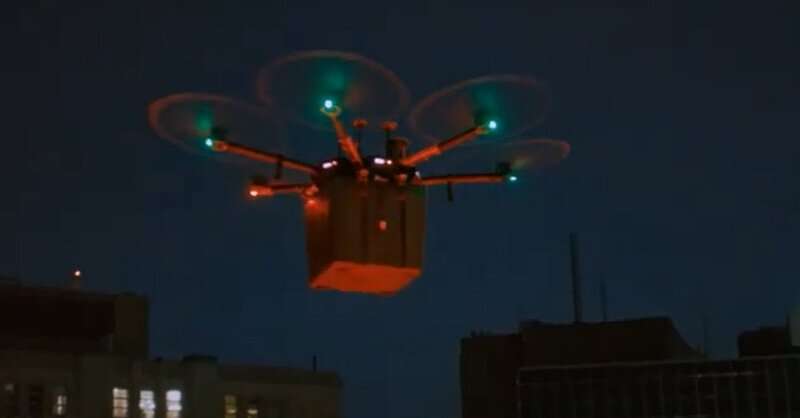Proof-of-concept drone flight delivers transplant lung to patient in Toronto

A team of researchers from Toronto General Hospital Research Institute, Unither Bioelectronics Inc., and Techna, University Health Network, has demonstrated the feasibility of using drones to carry human organs for transplantation to nearby locales. In a Focus piece, published in the journal Science Robotics, the researchers outline the factors that went into the groundbreaking event, and what it could mean for future patients around the world.
As drone technology has become more reliable, engineers have begun to use them for more critical applications. In this instance, a drone carried a human lung donated by a deceased patient at one hospital in downtown Toronto, Canada, to another patient needing a new lung waiting in another hospital, also in downtown Toronto.
The feasibility study was not the first to use a drone to carry human organs or medical supplies, but it is perhaps the most stringent. The effort was meant to test the use of drones for carrying donated organs on a regular basis. To that end, they began by selecting a drone—the Chinese-made M600 Pro, which has proven to be a workhorse.
Next, they modified the drone to suit their specific needs. First, they added new electronics designed specifically for strong connectivity—the drone is steered on its path by a human pilot. Next, they added a parachute, lights, several cameras, GPS trackers and a recovery system.
Finally, they removed the landing gear and replaced it with a container box specifically designed to keep organs cool during transport. Once they were satisfied they had the drone configured properly, they began making test flights. They had the drone carry objects from point to point, testing all of its features. Then, after 400 such test flights, they deemed their drone ready for prime time.
The proof-of-concept flight took off from Toronto Western Hospital with the drone carrying a donated lung. It was then flown to Toronto General Hospital, just two kilometers away, where the lung was delivered and safely implanted into the waiting patient. The researchers suggest their approach can be used for short-distance transfers in densely populated areas, such as across a city, greatly reducing delivery time.
They note that very often, even short transfers using vehicles on the ground can take a lot of time due to congestion and unforeseen tie-ups. The drone, they note, can fly right over all that. They also suggest that their approach could be used to carry organs in rural areas, where hospitals do not always have helicopter pads.
Andrew T. Sage et al, Testing the delivery of human organ transportation with drones in the real world, Science Robotics (2022). DOI: 10.1126/scirobotics.adf5798
© 2022 Science X Network
Citation:
Proof-of-concept drone flight delivers transplant lung to patient in Toronto (2022, December 22)
retrieved 22 December 2022
from https://techxplore.com/news/2022-12-proof-of-concept-drone-flight-transplant-lung.html
This document is subject to copyright. Apart from any fair dealing for the purpose of private study or research, no
part may be reproduced without the written permission. The content is provided for information purposes only.
For all the latest Technology News Click Here
For the latest news and updates, follow us on Google News.
